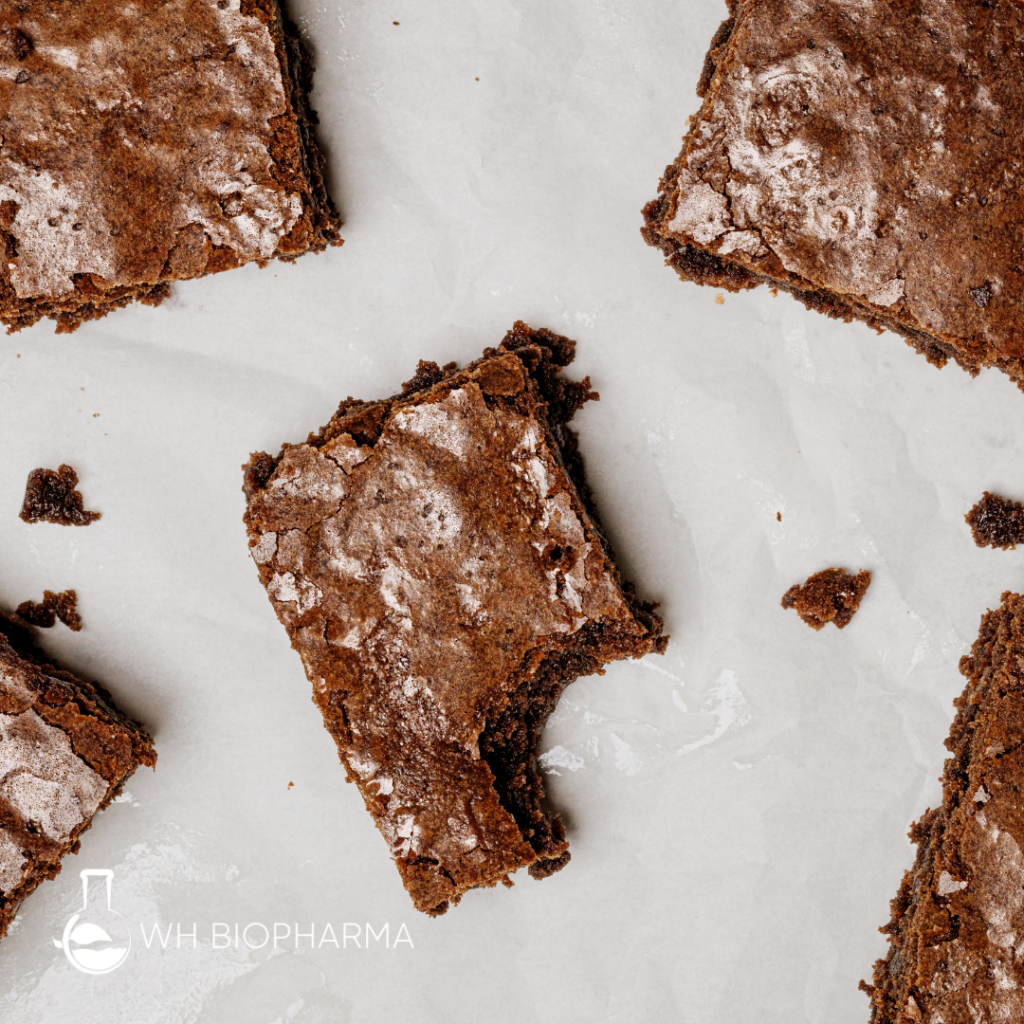Brownies are a beloved dessert that can satisfy even the most insatiable sweet tooth. The dense, fudgy, and chocolatey treat has been a staple in the world of baking for generations. However, with an increasing focus on health and fitness, many people are turning to alternatives like protein brownies to enjoy their favorite indulgence without the guilt. In this article, we’ll dive into the nutritional differences between protein brownies and regular brownies to help you make an informed choice for your cravings.
The Battle of Ingredients
Regular Brownies
Traditional brownies are typically made with ingredients like flour, sugar, butter, eggs, and of course, plenty of chocolate. While the ingredient list is relatively simple, it’s not always the healthiest. Let’s break down some of the key components:
Flour: Regular brownies are made with all-purpose flour, which provides carbohydrates for energy. However, this often means a high glycemic index, leading to quick spikes in blood sugar levels.
Sugar: Sugar is a primary ingredient in regular brownies, contributing to their sweet taste. Unfortunately, excessive sugar consumption can lead to various health issues, including weight gain and increased risk of chronic diseases.
Butter: Butter is high in saturated fats, which can be detrimental to heart health when consumed in excess.
Eggs: Eggs provide protein, but they also contain a significant amount of cholesterol.
Chocolate: While dark chocolate does offer some health benefits, the sugar content in most brownie recipes offsets those advantages.
Protein Brownies

Protein brownies, on the other hand, are specially formulated to be a healthier alternative. They often contain ingredients like whey protein, almond flour, or oat flour, and are sweetened with natural sweeteners like stevia or erythritol. Let’s explore the nutritional aspects of these ingredients:
Protein: Protein brownies live up to their name by containing a significant amount of protein. This macronutrient is essential for muscle growth and repair.
Almond or Oat Flour: Replacing regular flour with almond or oat flour provides more fiber, which aids in digestion and helps maintain steady blood sugar levels.
Natural Sweeteners: Stevia and erythritol are low-calorie sweeteners that do not significantly impact blood sugar. This is excellent news for those looking to control their sugar intake.
Cocoa Powder: Protein brownies maintain the rich chocolate flavor by using unsweetened cocoa powder, which is much lower in sugar than traditional chocolate.
Protein vs. Sugar: The Nutritional Showdown

Protein Content
One of the most significant differences between protein brownies and regular brownies is their protein content. Protein brownies are designed to be a protein-packed snack, making them a suitable option for individuals looking to increase their protein intake, such as athletes, bodybuilders, or those on a high-protein diet. Depending on the brand and recipe, protein brownies can contain anywhere from 10 to 20 grams of protein per serving, while regular brownies usually contain just a fraction of that, often less than 2 grams per serving.
Sugar Content
The sugar content in regular brownies is often quite high, contributing to their sweet and indulgent taste. Consuming too much sugar can lead to various health issues, including weight gain, tooth decay, and an increased risk of type 2 diabetes. Protein brownies, however, are sweetened with low-calorie or natural sweeteners, reducing the sugar content significantly. Some protein brownies contain little to no added sugar, making them a better choice for those watching their sugar intake.
Calorie Comparison
The calorie content of protein brownies and regular brownies can vary depending on the specific brand and recipe. However, on average, protein brownies tend to be lower in calories than their regular counterparts. This can be an advantage for individuals who are calorie-conscious or looking to maintain or lose weight.
Fat Content
Traditional brownies are typically higher in saturated fats due to the use of butter. Protein brownies, on the other hand, often use healthier fats like coconut oil or almond butter. While fats are an essential part of a balanced diet, it’s important to choose the right kinds of fats to support overall health.
Fiber Benefits
Protein brownies, with their almond or oat flour, provide more dietary fiber compared to regular brownies made with all-purpose flour. Fiber aids digestion, helps control appetite, and promotes stable blood sugar levels.
The Verdict
In the battle of protein brownies vs. regular brownies, the choice ultimately comes down to your personal preferences and dietary goals. If you’re looking for a healthier, protein-rich, and lower-sugar alternative, protein brownies can be a great choice. They are especially suitable for athletes, fitness enthusiasts, or those trying to curb their sugar intake.
However, if you’re in the mood for an occasional indulgence and are not overly concerned about protein intake or sugar content, regular brownies can still be enjoyed in moderation. After all, balance is key to maintaining a healthy and sustainable diet.
It’s wonderful that we have choices in the world of brownies, allowing us to satisfy our sweet cravings while still aligning with our nutritional goals. Whether you opt for a protein-packed brownie or the classic fudgy delight, remember to enjoy it mindfully and savor every bite.





